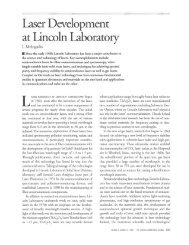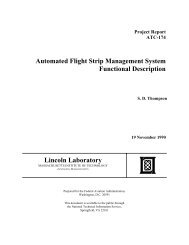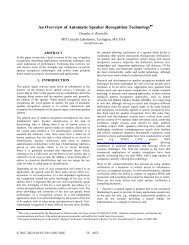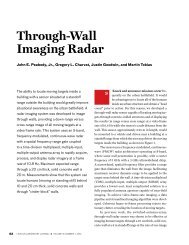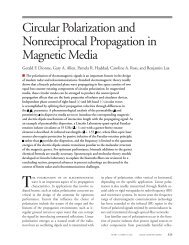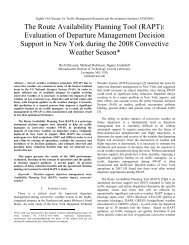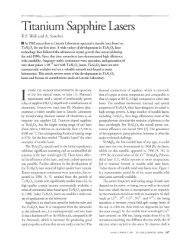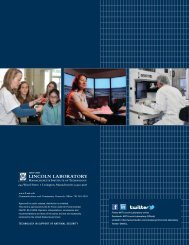2011 MIT Lincoln Laboratory Facts
2011 MIT Lincoln Laboratory Facts
2011 MIT Lincoln Laboratory Facts
Create successful ePaper yourself
Turn your PDF publications into a flip-book with our unique Google optimized e-Paper software.
assessment of deployed system capabilities. The program<br />
includes a focused evaluation of the survivability of U.S.<br />
air vehicles against air defense systems. A strong emphasis<br />
is placed on the rapid prototyping of sensor and system<br />
concepts and algorithms, and the transfer of the resulting<br />
technologies to government contractors responsible for<br />
the development of operational systems.<br />
Communication Systems<br />
The Communication Systems mission works to enhance<br />
and protect the capabilities of the nation’s global defense<br />
networks. Emphasis is placed on synthesizing system architectures,<br />
developing component technologies, building and<br />
demonstrating end-to-end system prototypes, and then<br />
transferring this technology to industry for deployment<br />
in operational systems. Current efforts span all network<br />
layers (from physical to application), with primary focuses<br />
on radio-frequency (RF) military satellite communications<br />
(MILSATCOM), net-centric operations, free-space laser<br />
communications, line-of-sight networking, speech and<br />
language processing, and computer network operations.<br />
ISR Systems and Technology<br />
The Intelligence, Surveillance, and Reconnaissance (ISR)<br />
Systems and Technology mission conducts research and<br />
development into advanced sensing concepts, signal<br />
and image processing, high-performance computing,<br />
networked sensor architectures, and decision sciences.<br />
This work is focused on providing improved surface and<br />
undersea surveillance capabilities for problems of national<br />
interest. The <strong>Laboratory</strong>’s ISR program encompasses<br />
airborne imaging and moving target detection radar,<br />
RF geolocation systems, electro-optic imaging, laser radar,<br />
and acoustic sensing. For such systems, the <strong>Laboratory</strong><br />
typically performs phenomenology analysis, system design,<br />
component technology development, and significant<br />
experimentation. Successful concepts often develop into<br />
Missions and Capabilities 9



